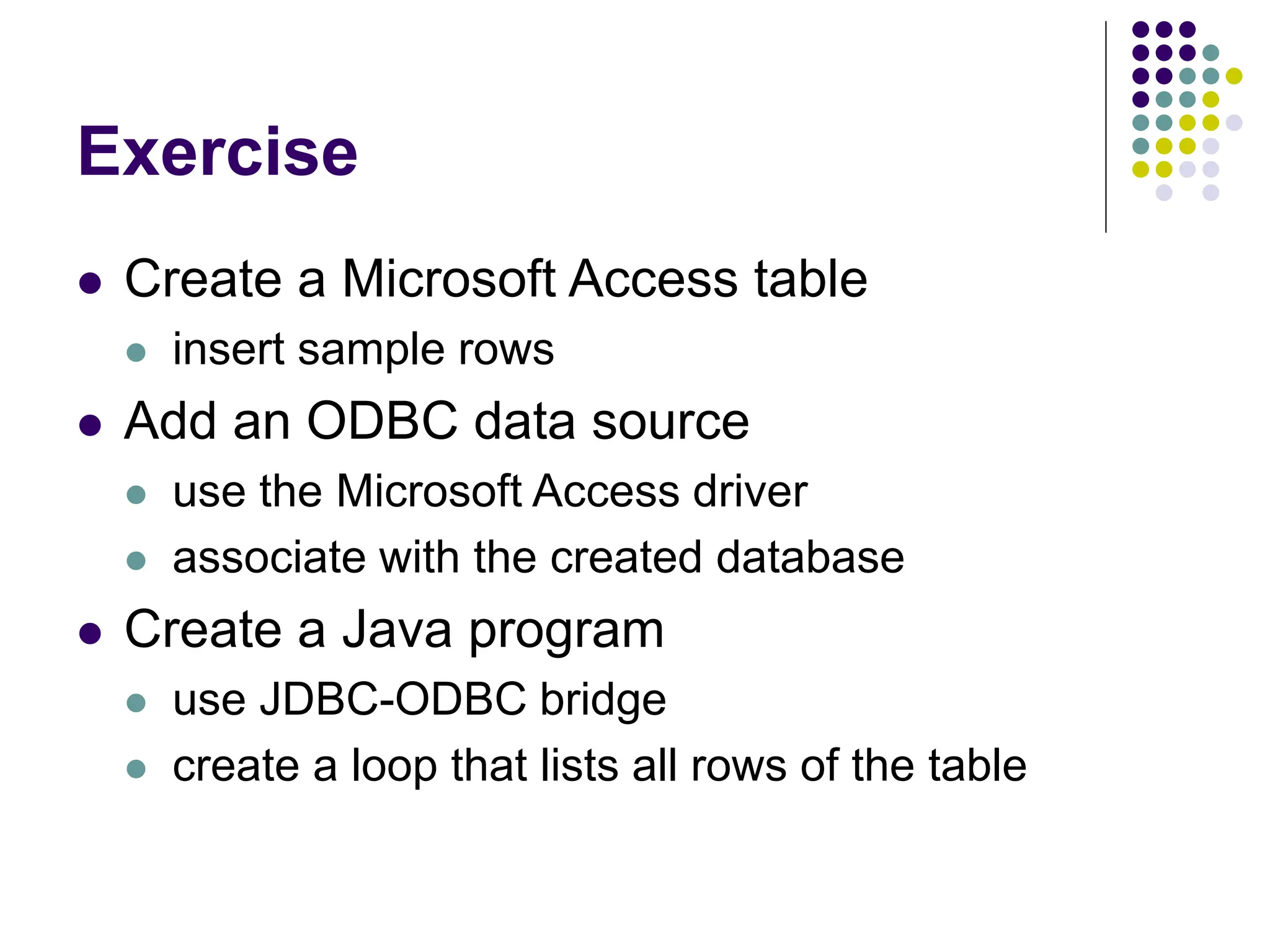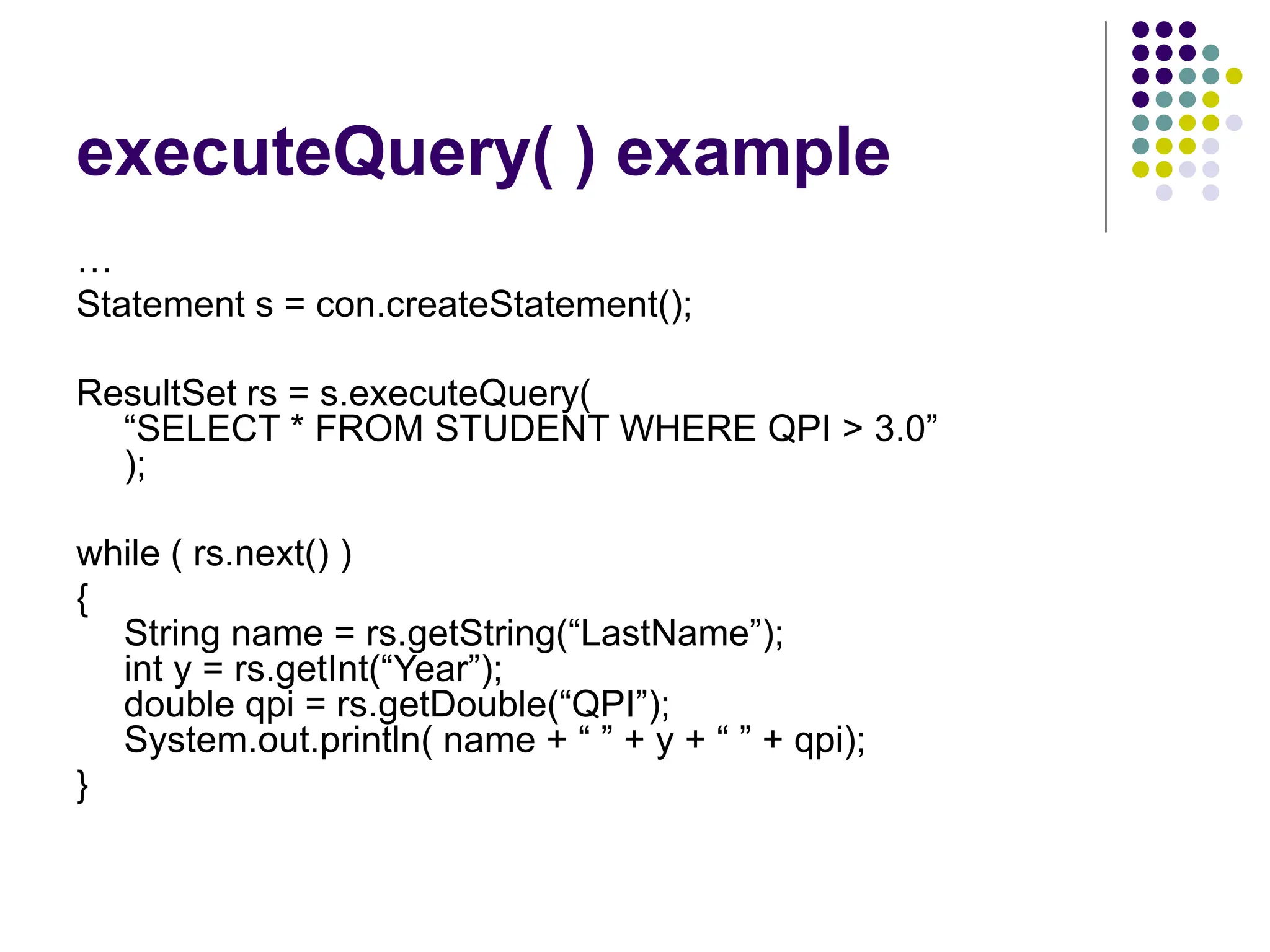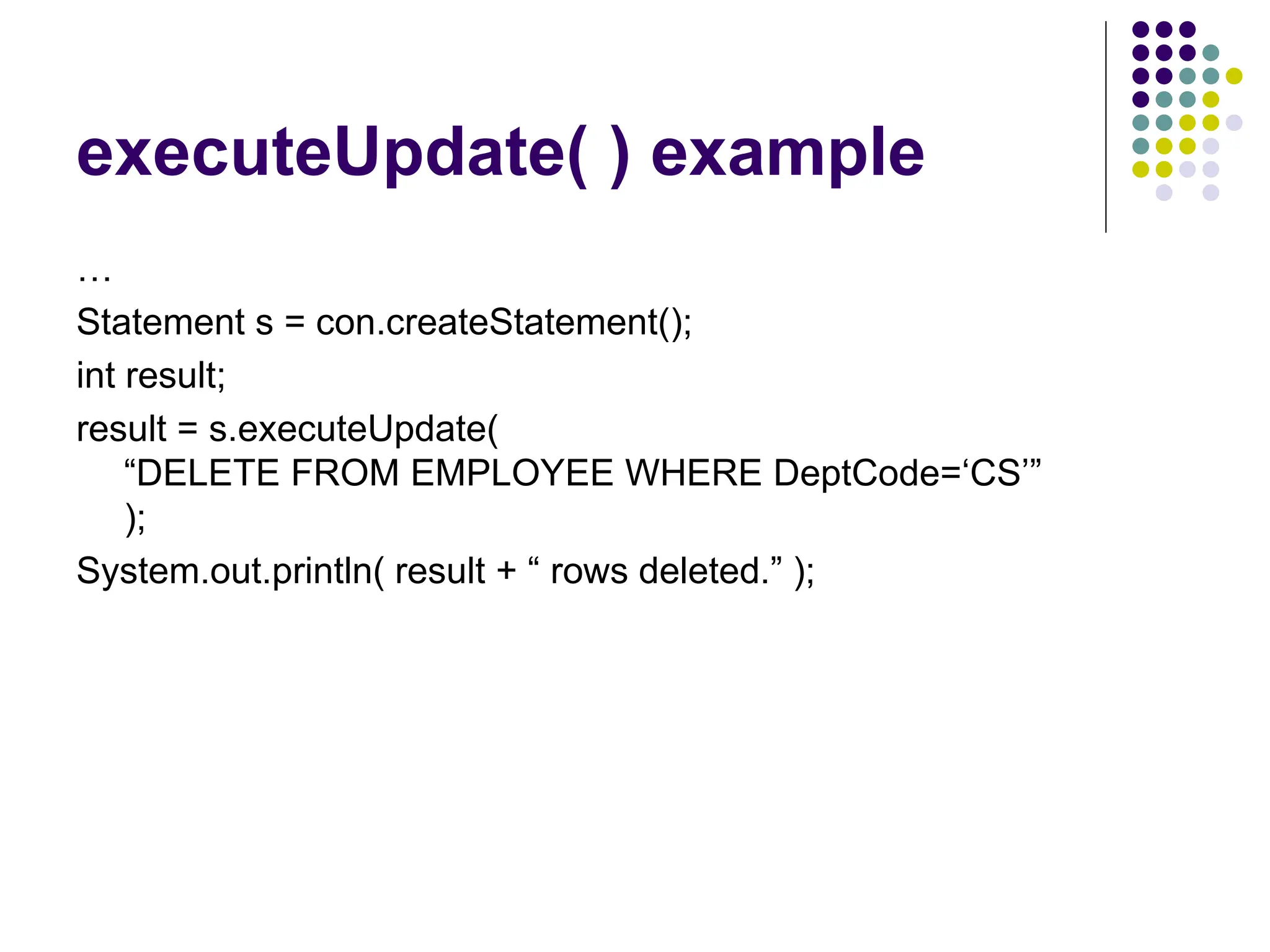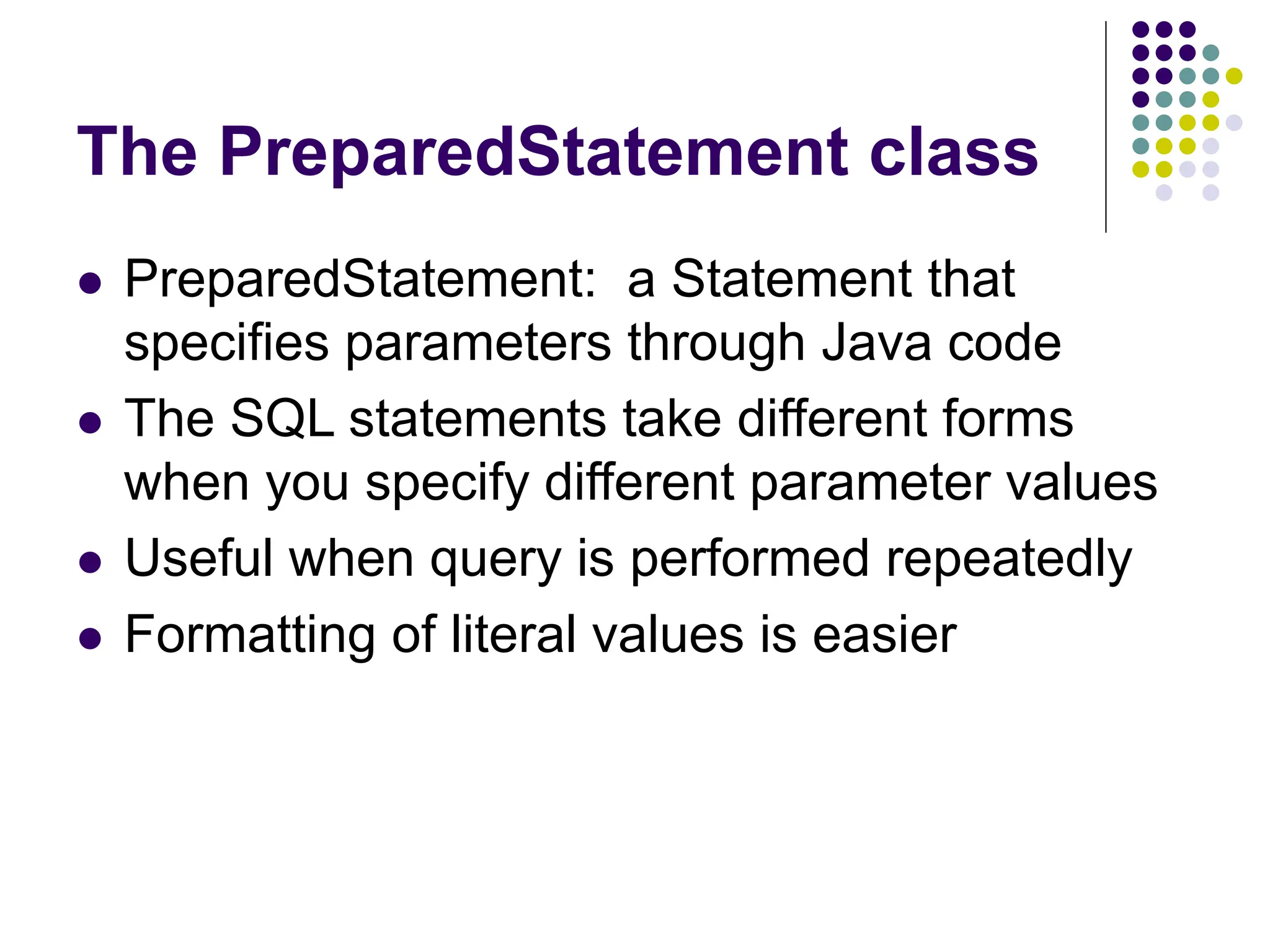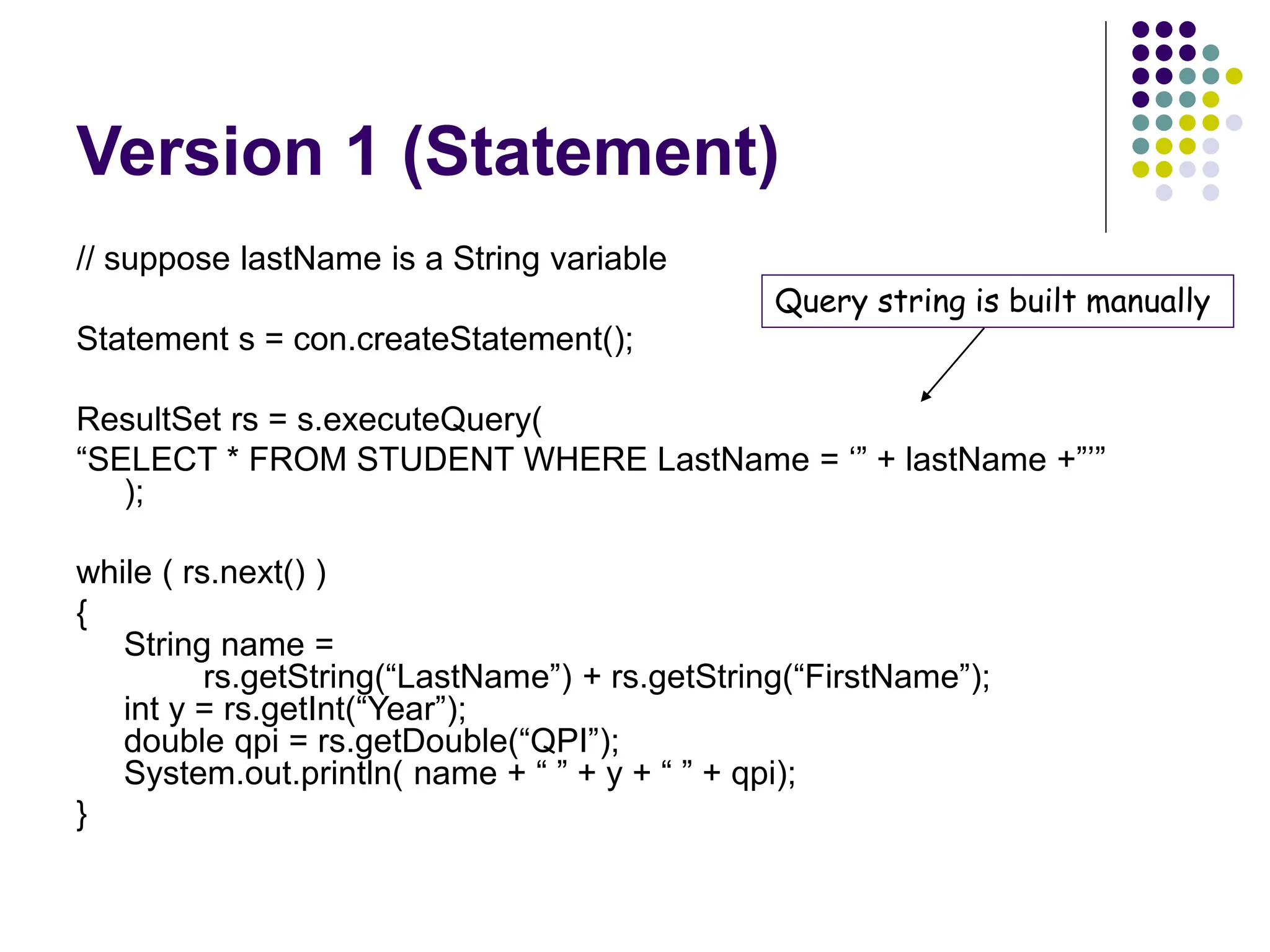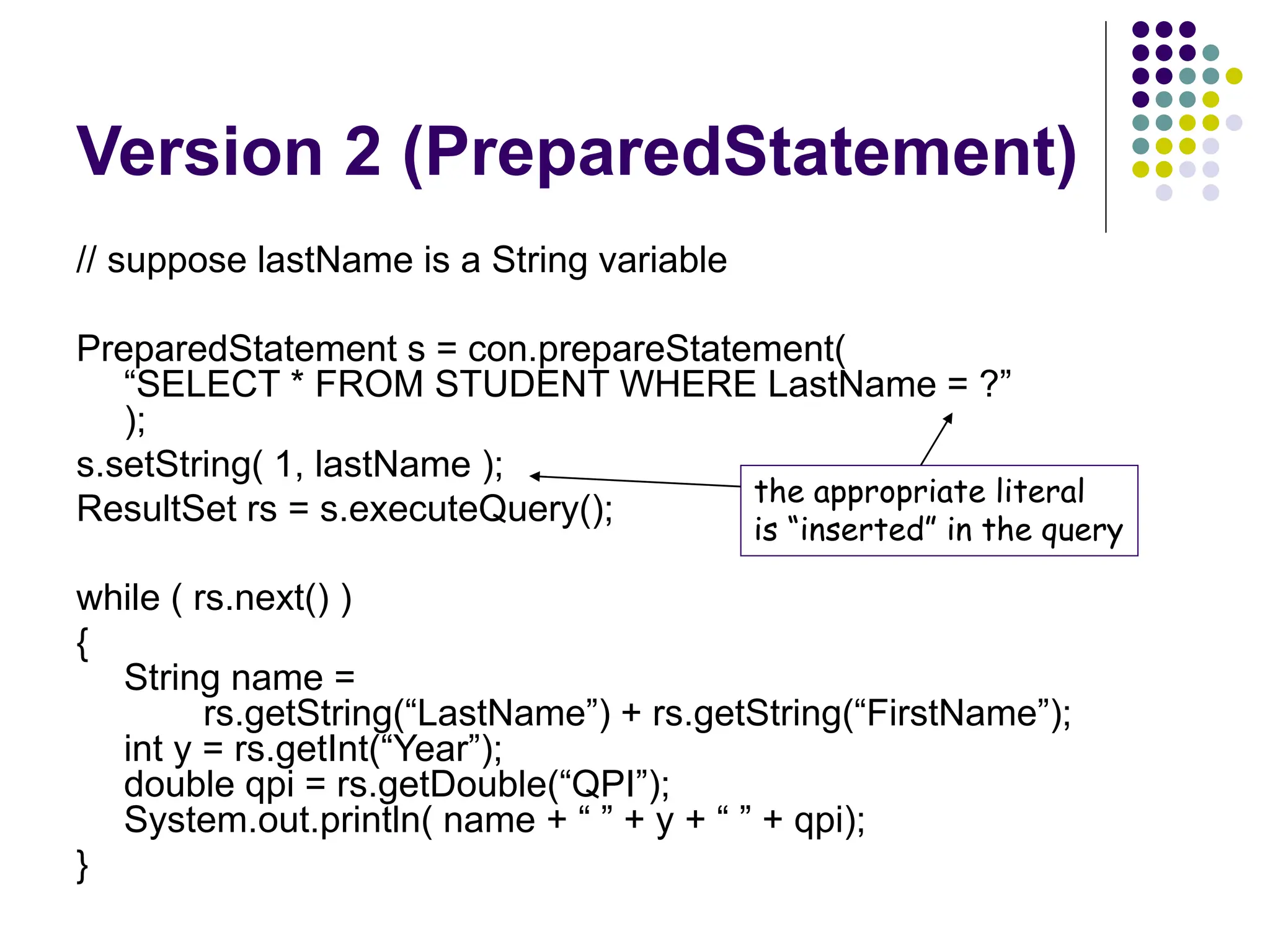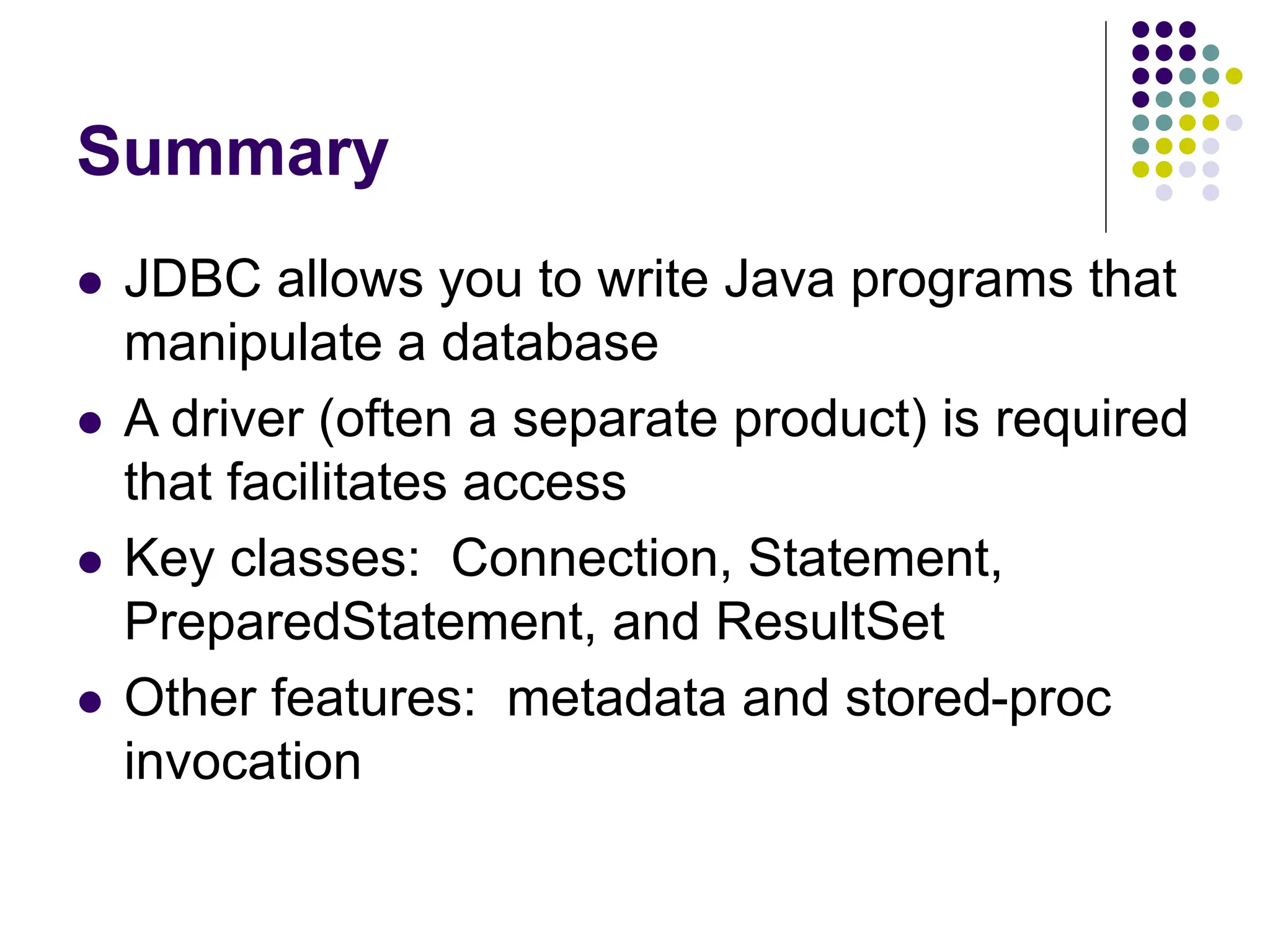JDBC provides access to relational databases through Java programs. It uses drivers specific to each database to mediate between JDBC and the database. The key classes are Connection for establishing a connection, Statement for executing SQL statements, PreparedStatement for parameterized queries, and ResultSet for retrieving result sets. Programs use these classes to load a driver, connect to a database, execute statements, and process result sets within the program.
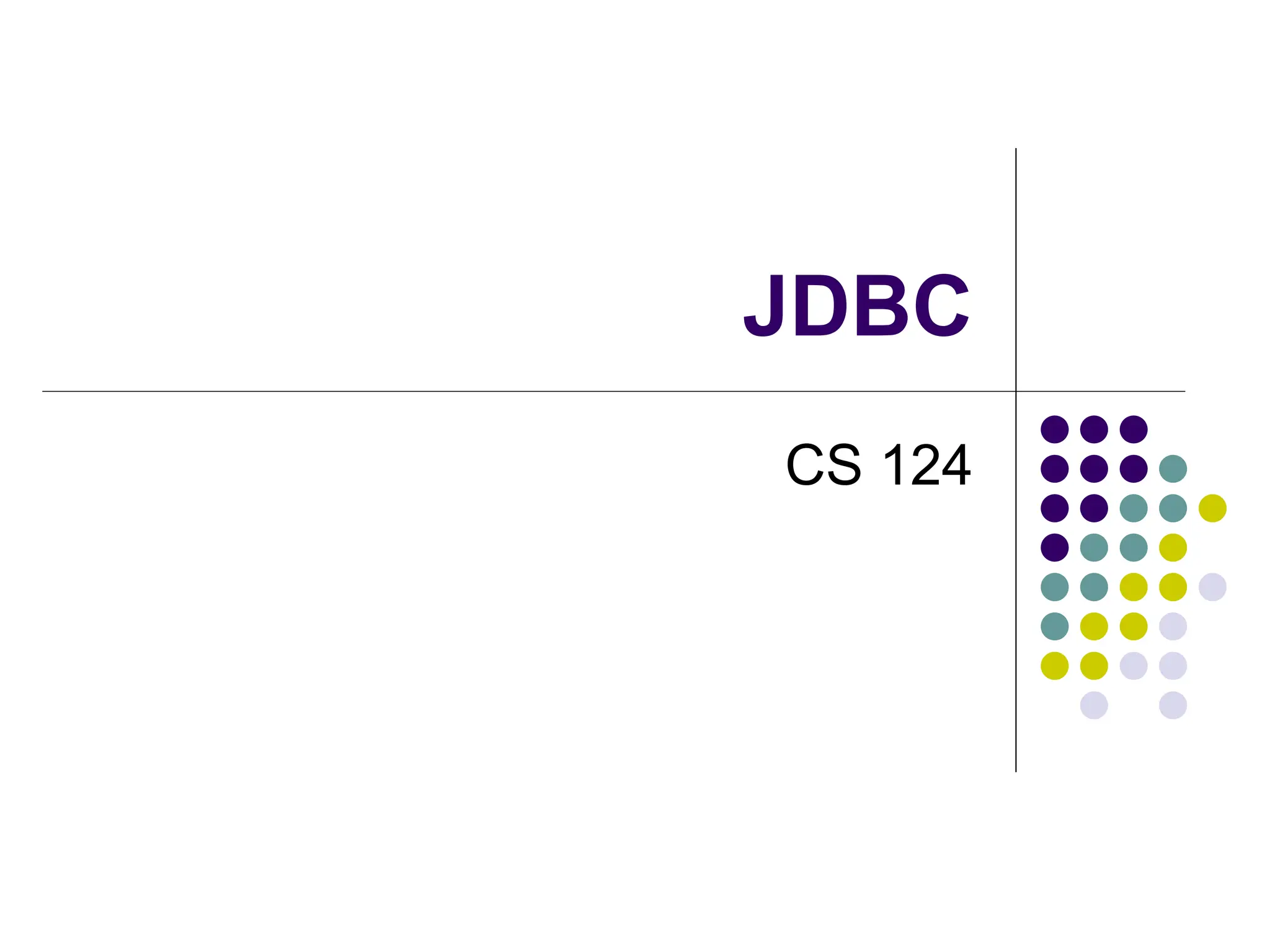
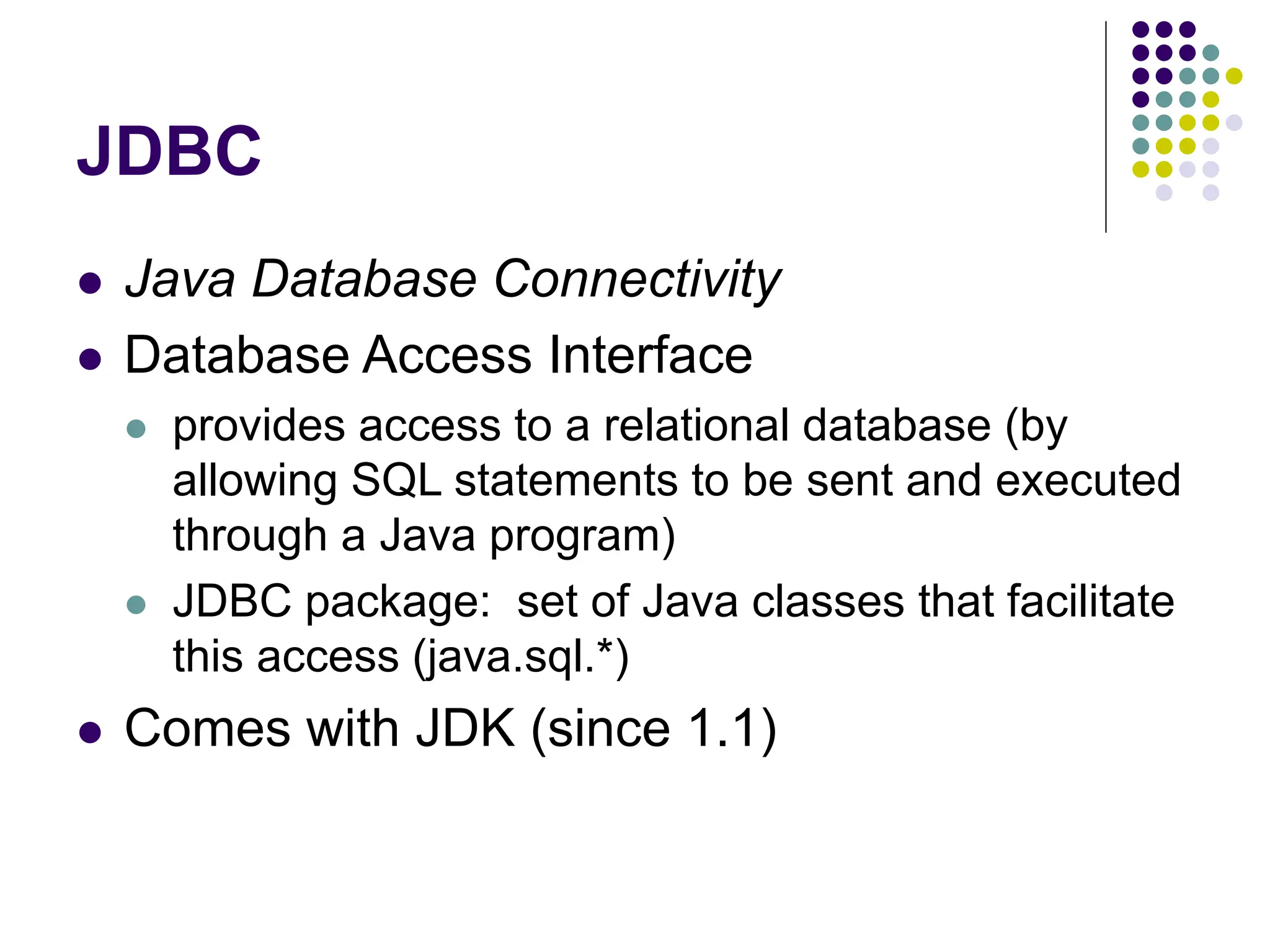
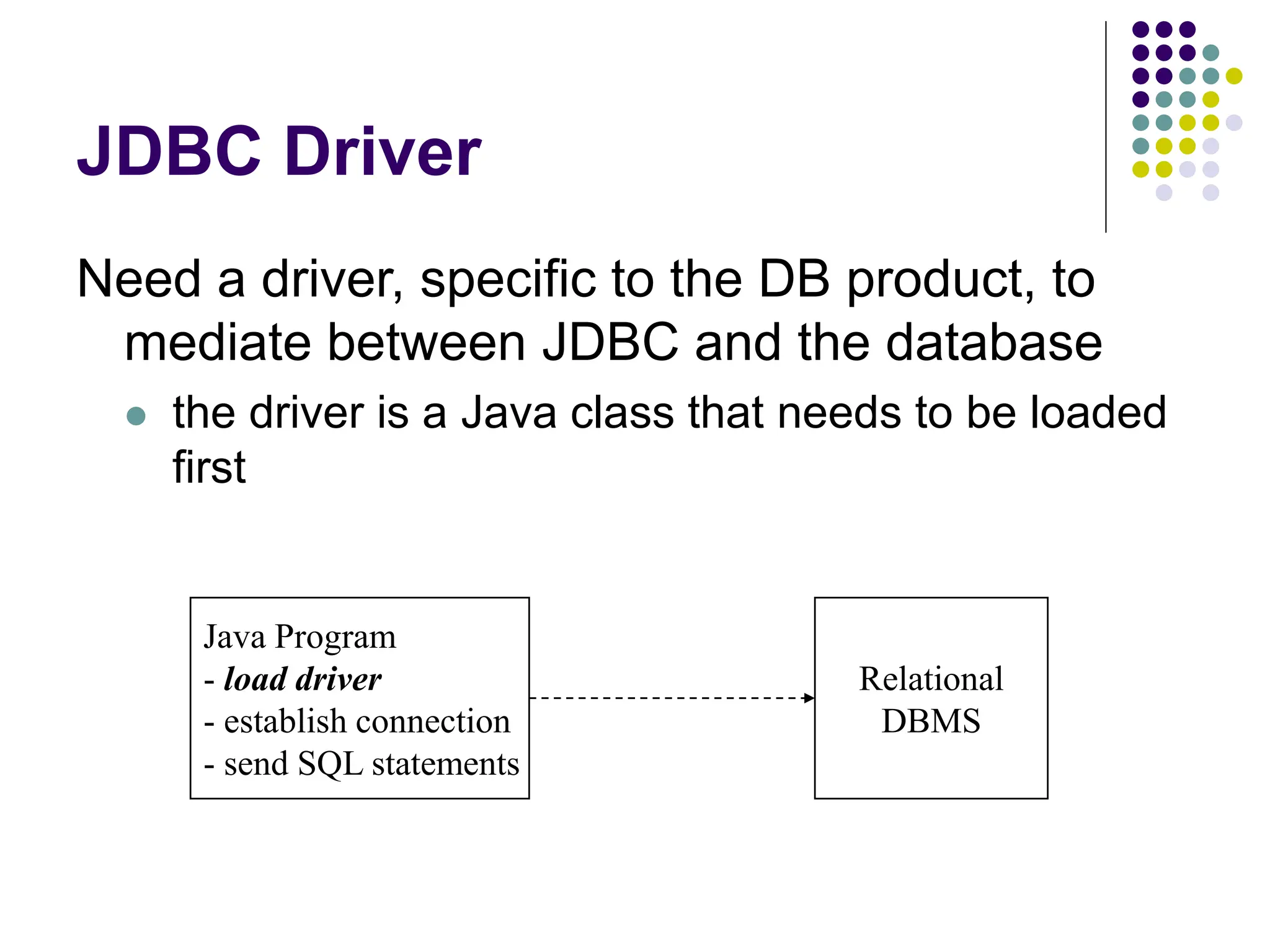
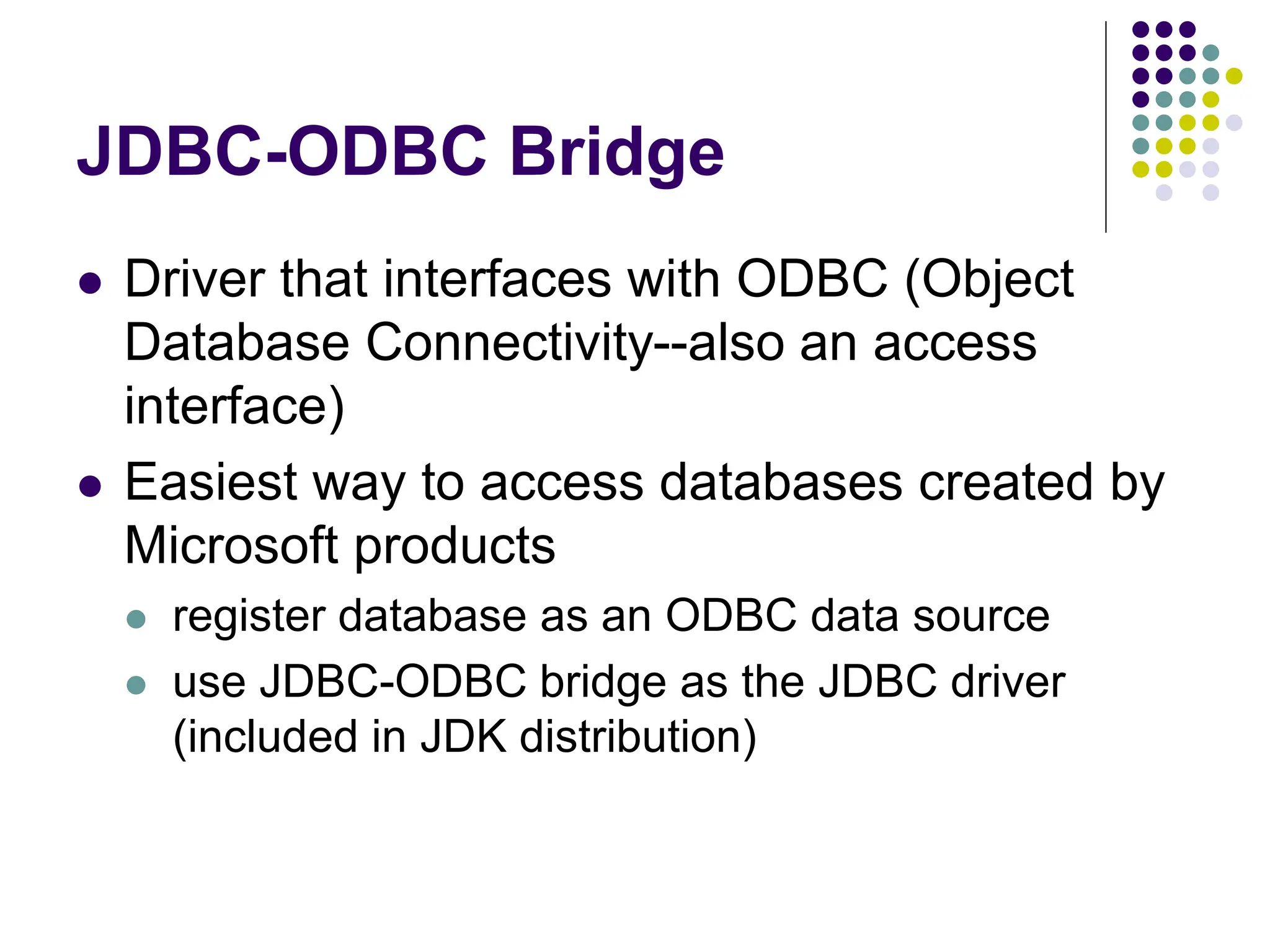
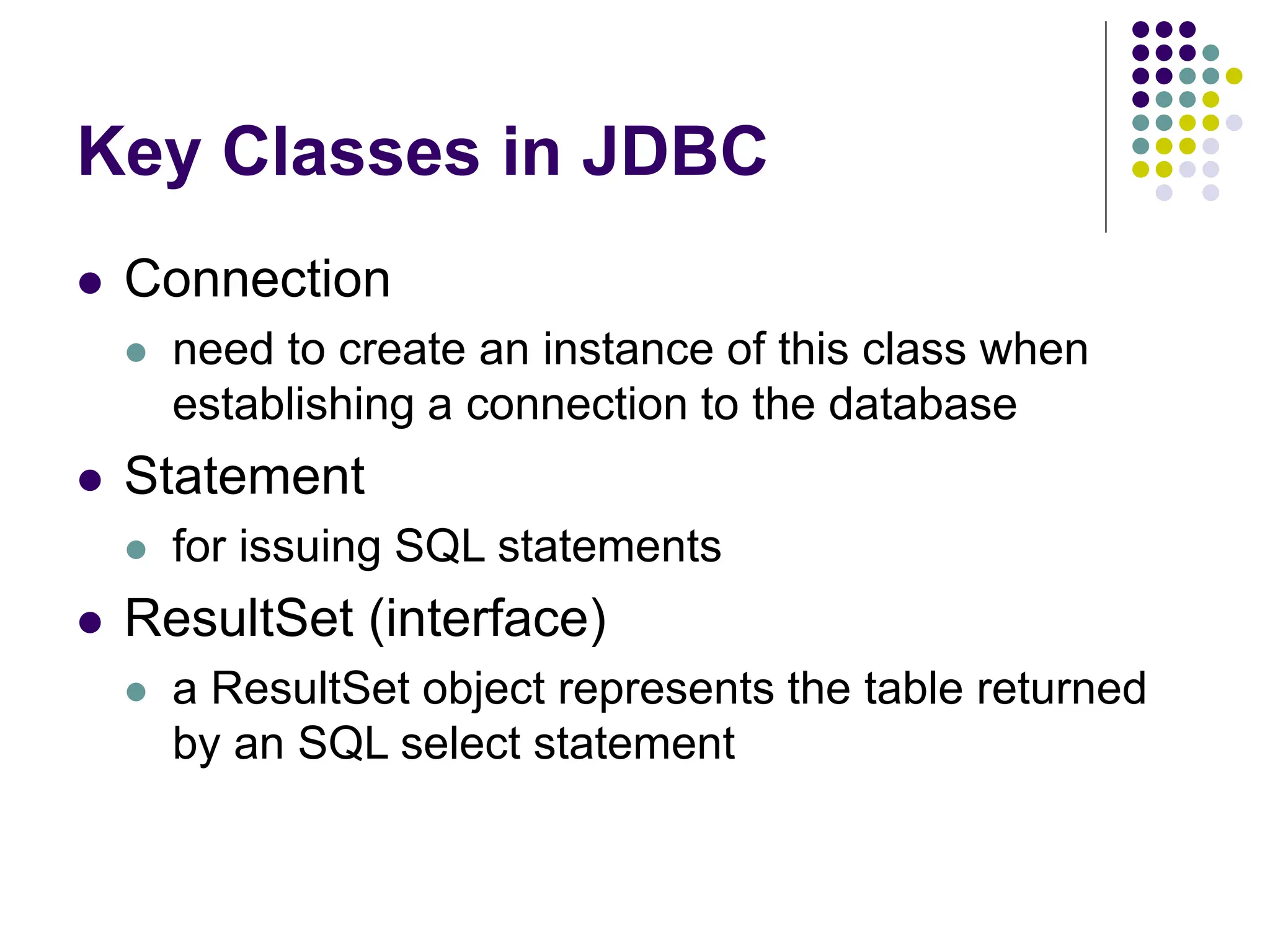
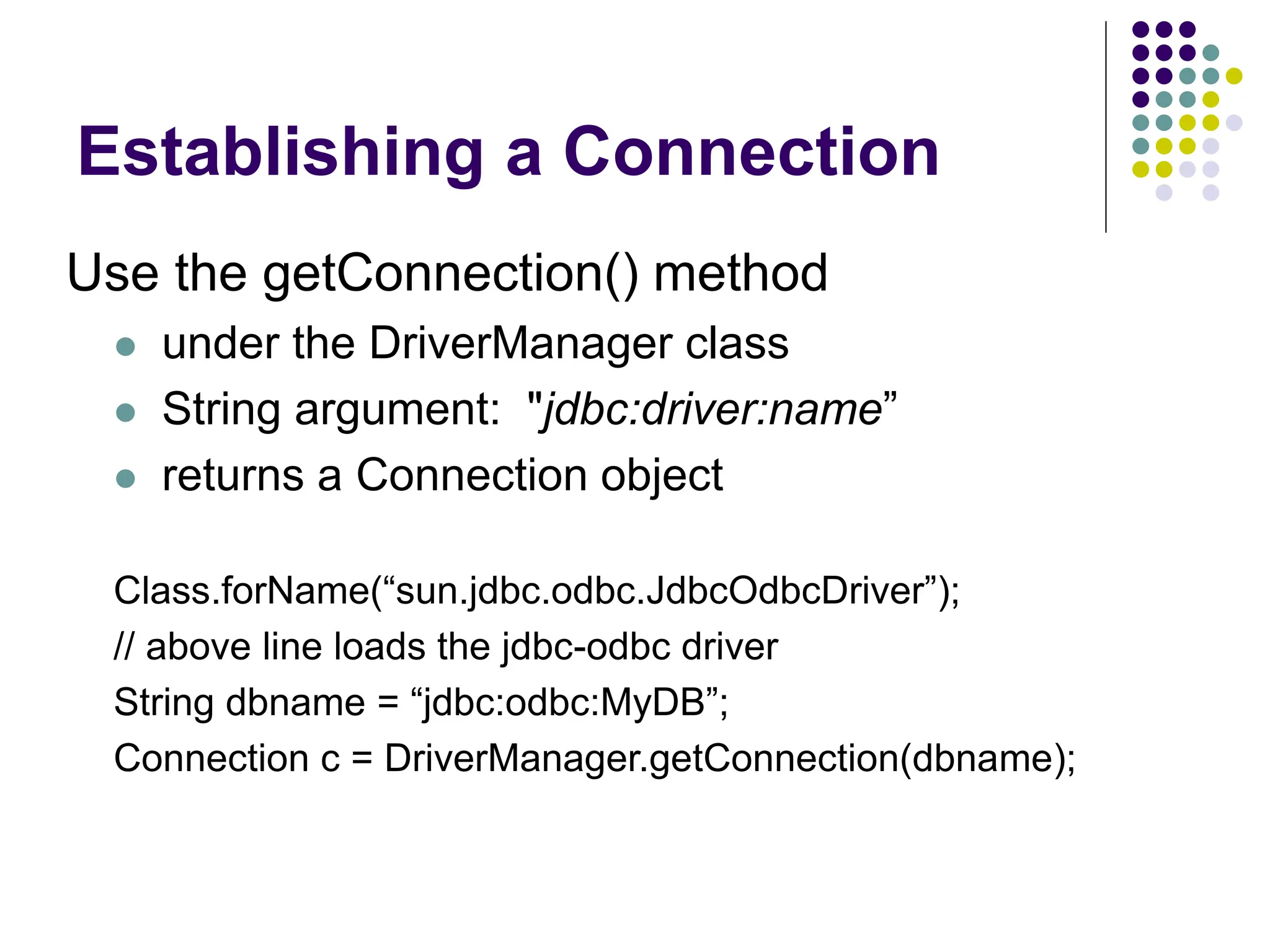
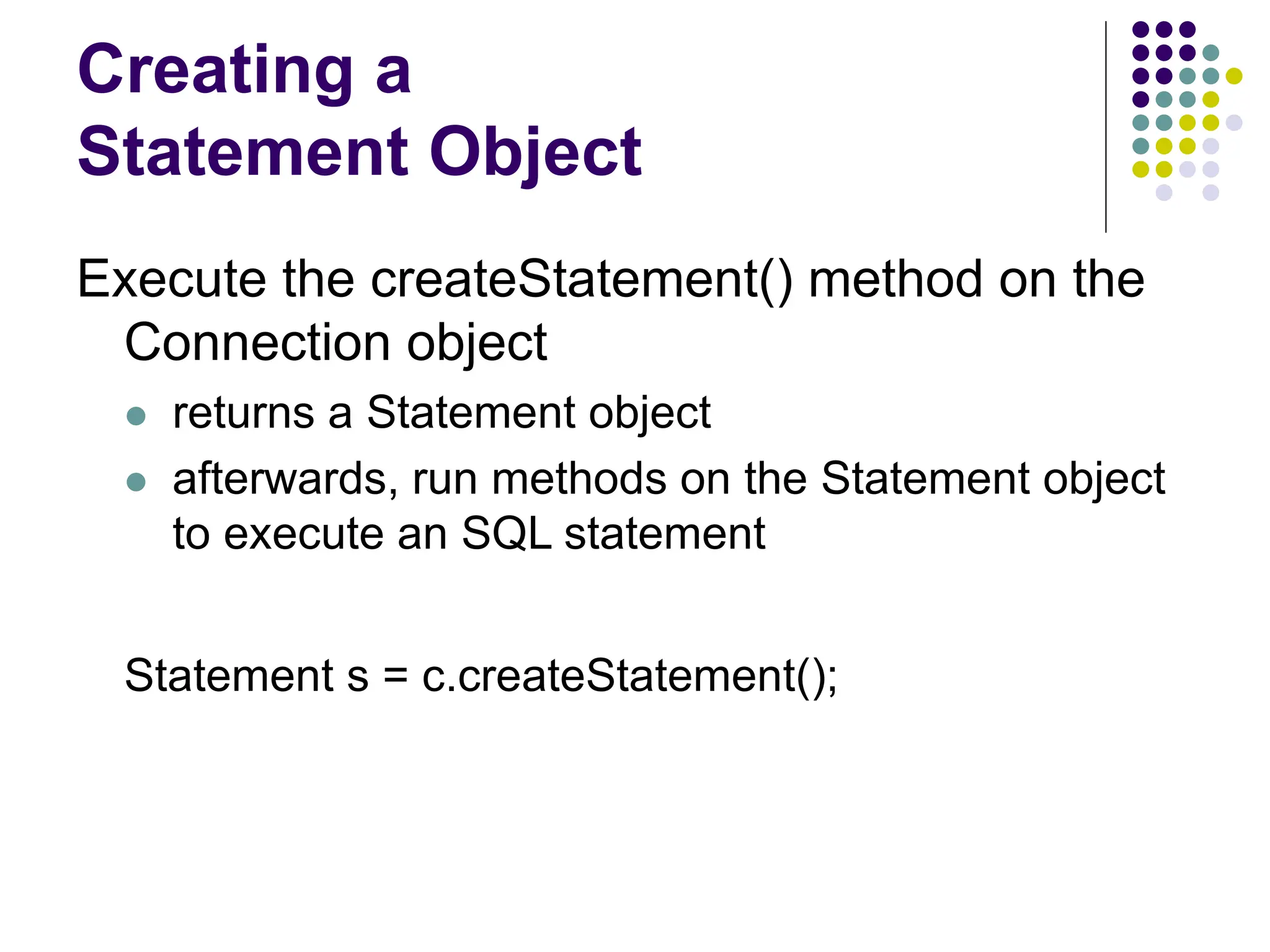
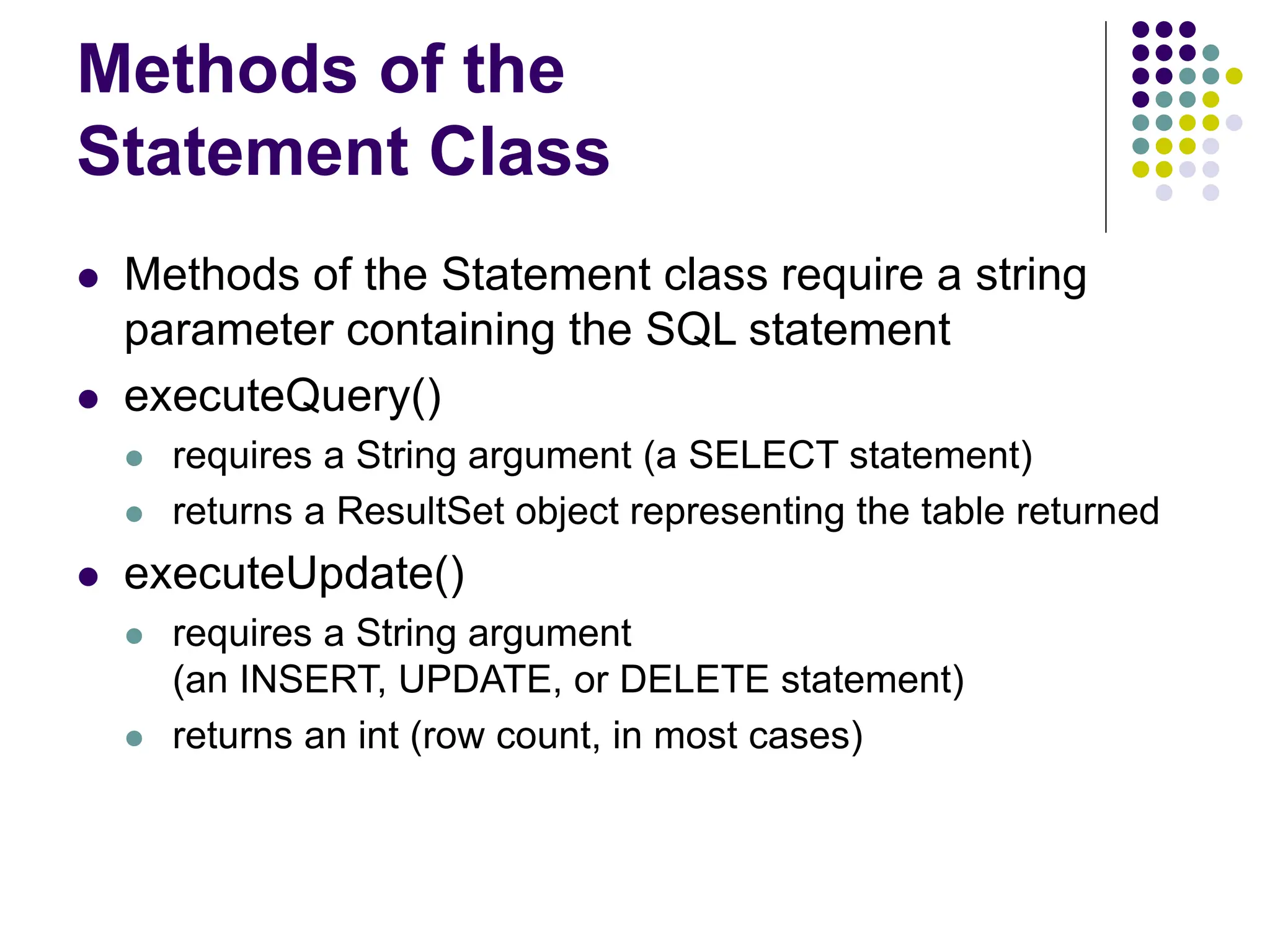
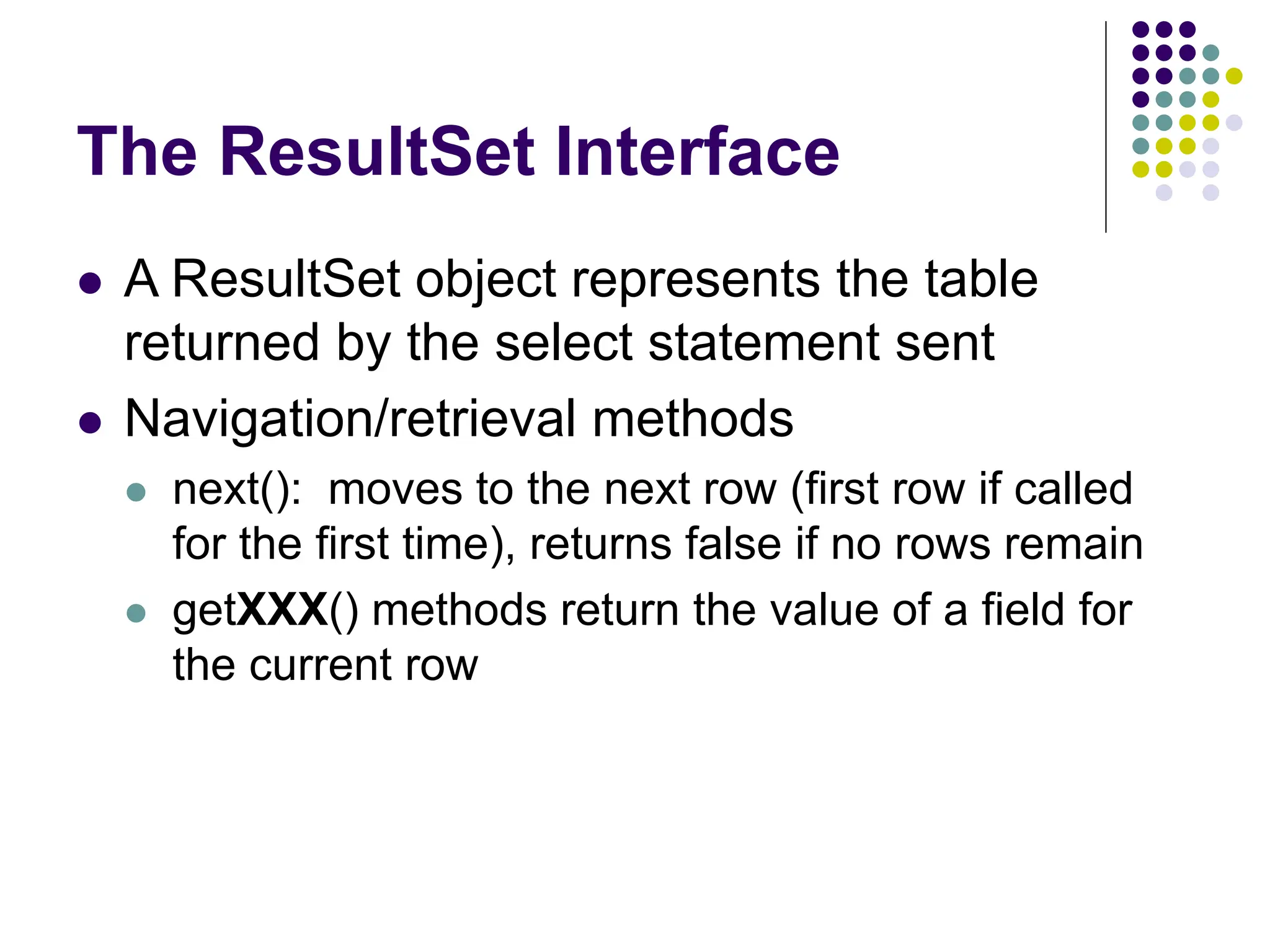
![ResulSet example
ResultSet rs;
rs = s.executeQuery(“SELECT * FROM [ORDER]”);
rs.next(); // gets the first row (use in a loop for multiple rows)
// suppose the ORDER table has an integer field
// called quantity
int myvar = rs.getInt(“quantity”);
// if you knew that quantity is the 2nd field in the table
myvar = rs.getInt(2);
Need braces because
ORDER is a reserved
word in SQL](https://image.slidesharecdn.com/cs124-l9-jdbc-240327181131-eda96283/75/JDBC-JAVA-DATABASE-CONNECTIVITY-AND-JAVA-10-2048.jpg)
